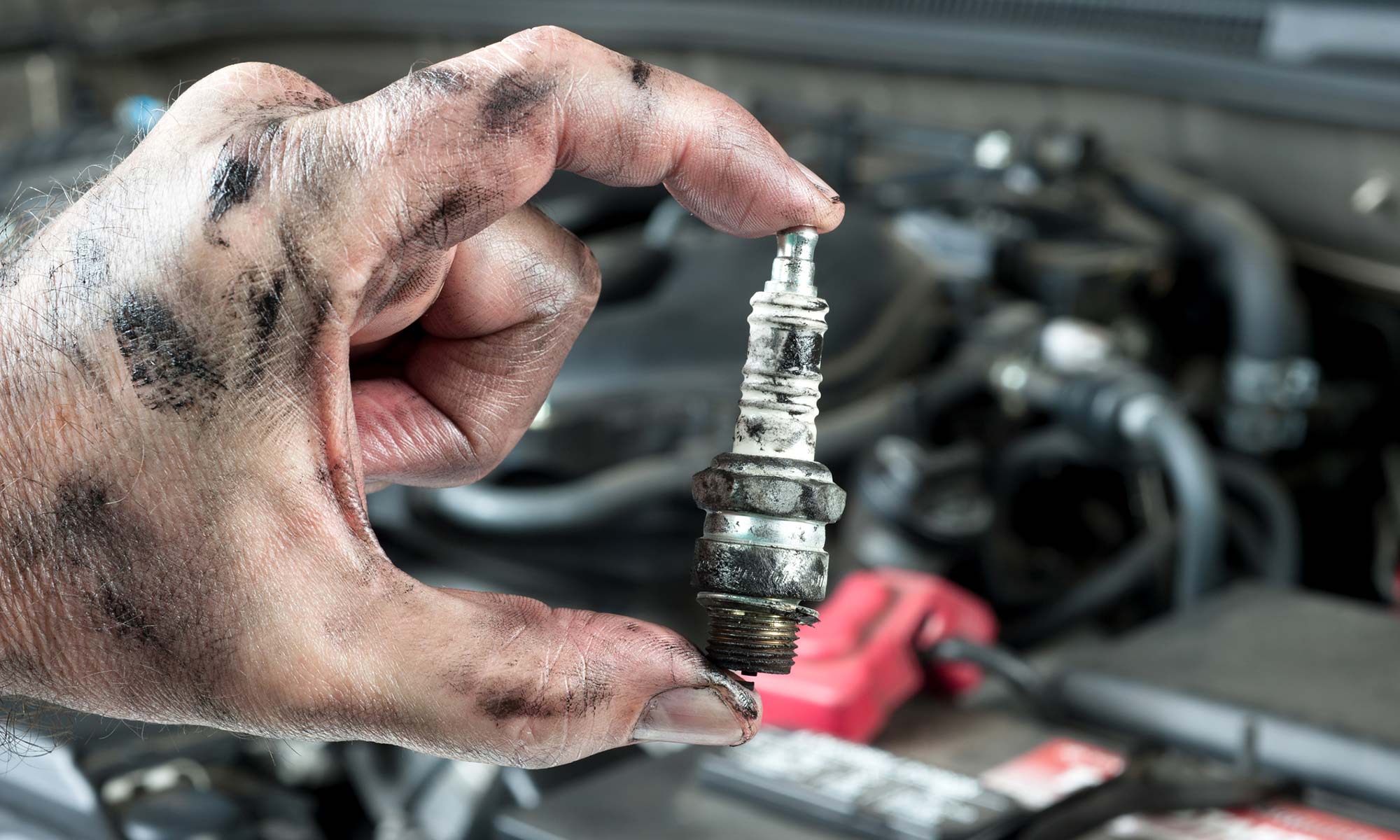Why Should I Change My Spark Plugs Before Winter?

Unless you own a hybrid or an electric vehicle, checking your spark plugs is an essential step in any vehicle’s recommended maintenance schedule. With the plunging temperatures of winter, making sure you have a fully functioning set of spark plugs can make all the difference in being able to hit the open road or experiencing an engine misfire.
To better prepare yourself and your car for the harsh winter conditions ahead, it’s vital to understand the importance of changing your spark plays. Recognizing the signs of faulty spark plugs and how you can replace them yourself can also help ensure you’re ready for the winter weather ahead.
Why Do I Need to Replace My Spark Plugs?
Spark plugs, which generate the spark needed to ignite a car’s internal combustion engine. Like other wear and tear items, your car, truck, or SUV’s spark plugs will need to be replaced over time. Driving with worn spark plugs can lead to engine damage, as they require more voltage to fire and can place excess strain on your car’s battery.
On average, spark plugs need to be checked and changed every 30,000 miles. However, this can vary depending on your vehicle’s make/model. To ensure you change your spark plugs when needed, refer to your owner’s manual for more details. You can also visit a certified repair facility or your dealership to check any special requirements for your vehicle.
Choosing the Right Spark Plugs
There are two main types of spark plugs: hot and cold. Cold spark plugs are used to generate more heat during the combustion process while also allowing the heat to transfer more quickly from the plug’s firing tip. Conversely, hot spark plugs will transfer heat much more slowly, helping to keep the firing tip hotter.
Hot spark plugs are used for most vehicles due to the slower transfer rate, which helps burn off carbon deposits and other debris from the plugs, helping them last longer. Cold spark plugs are more commonly used in high-performance engines, as they operate at a higher temperature than standard vehicles.
Spark plugs also differ in quality, depending on the durability of the material used in the electrodes. Copper spark plugs are more affordable, while platinum or iridium spark plugs will cost more and will last much longer than copper plugs. You can also get double-platinum ones, which some cars may require.
To learn what type of spark plugs your vehicle needs, refer to your owner’s manual.
Signs of Bad Spark Plugs
As a vital component in starting your vehicle, faulty or bad spark plugs can result in several issues for your vehicle. Some of the most common signs of faulty include:
- Low fuel economy
- Difficulty starting the engine
- Engine misfiring and surging
- Juddering sounds when idle
- More exhaust fumes
You can also physically inspect your spark plugs to determine if they may need to be replaced. Things to look out for will include:
- If the spark plug is dirty or shows signs of melting or heat blistering.
- If the end of the spark plug has rusted, this can cause a poor connection.
- If the spark plug is covered in oil or soot. Note that a reddish-brown coating on the plug’s ceramic part is typical and not usually a sign of any problems.
- If the spark plug has cracks, chips, or other damage.
- If either of the electrodes appears eroded or has an excessive buildup of deposits.
- If the electrode gap is too wide, which you can check by comparing it with a new plug or by using a spark plug gap tool.
If one of your plugs needs to be replaced, we recommend replacing the whole set simultaneously.
How Can I Change My Spark Plugs?
Changing your spark plugs is a straightforward task that you can do at home. To do so, you will need:
- Parts:
- New spark plugs
- Tools:
- Pliers
- Spark plug socket (and extender if required)
- Torque wrench
- Spark plug gap tool
- Other Items:
- Can of compressed air
- Clean rag
- Grease
Once you have all of the necessary items, you can begin changing your spark plugs. First, it’s vital to ensure the engine is cool before you start. Next, refer to your owner’s manual to see how you can access your car’s spark plugs, as this will differ from vehicle to vehicle. This will also allow you to confirm how many spark plugs you may need to replace, as this too will vary depending on your car’s make/model.
Once you have confirmed the number of plugs you need to replace and that the engine is cool, you can now begin to replace your spark plugs one at a time. To do this, you need to:
Step 1: Remove the old spark plug
Remove any debris from around the area with some compressed air and a rag.
Carefully remove the wire by pulling the boot (not the wire itself). You might need to use pliers for this.
Use the compressed air again to remove any dirt that could fall in the gap when removing the spark plug.
Use the spark plug socket (and an extender if needed) to unscrew and remove the plug.
Step 2: Prep the new spark plug
Before you insert the new spark plug, compare it to the old one. They should be the same size, and the different components of the plugs should match up. This is a quick, useful check to ensure you’re using the correct plugs for your vehicle.
Make sure the new plug is gapped correctly by checking your owner’s manual. This information may also be displayed in the hood of the car. Next, use the gap tool to check the gap between the electrodes of your new spark plug and, if needed, to adjust the gap a tiny bit at a time.
Apply grease to the ceramic part of the new spark plug. Not all spark plugs need lubricant on the thread, so double-check with the spark plug manufacturer first if it isn’t mentioned on the box or in the instructions.
Step 3: Insert and tighten the new spark plug
Place the new plug into the spark plug socket and insert it, screwing it in by hand slightly.
Next, use a torque wrench to tighten the spark plug completely. However, be sure not to tighten the plug too much, as it can damage the thread needed to secure them in place.
Lastly, replace the spark plug wire by pushing the boot back in on top of the spark plug until you hear it click into place.
Once secured, repeat steps #1-3 for the remaining spark plugs your vehicle needs.
Protect Your Vehicle with Endurance
Staying up-to-date on your vehicle’s essential maintenance, including replacing your spark plugs, can help you avoid any unexpected breakdowns while on the road this winter. With an EnduranceAdvantage™ auto protection plan, you can also get peace of mind knowing you’re covered from unexpected breakdowns and costly auto repairs to your vehicle’s most vital components. Additionally, each EnduranceAdvantage plan comes with up to $3,500 in regular maintenance services, including oil and filter changes, tire rotations, engine diagnostic exams, and more — at no additional cost to you.
You can also receive a year of Endurance Elite Benefits with the purchase of any Endurance protection plan and a small activation fee. That means you can get 24/7 roadside assistance, up to 2 tire repairs or replacements, $500 collision discounts, and other great perks for even more coverage and savings.
For more information about how Endurance can help protect your vehicle, request a free, no-obligation quote or call 866.918.1438 to speak directly with a representative. You can also visit the Learning Center to discover even more helpful articles on topics such as seasonal maintenance tips, expert auto reviews, make/model comparisons, and more.













Chris has been covering the automotive industry and topics ranging from road trips to driverless car technology for around 10 years. His own preference is for retro 4x4s that will stand up to a muddy field in the country.